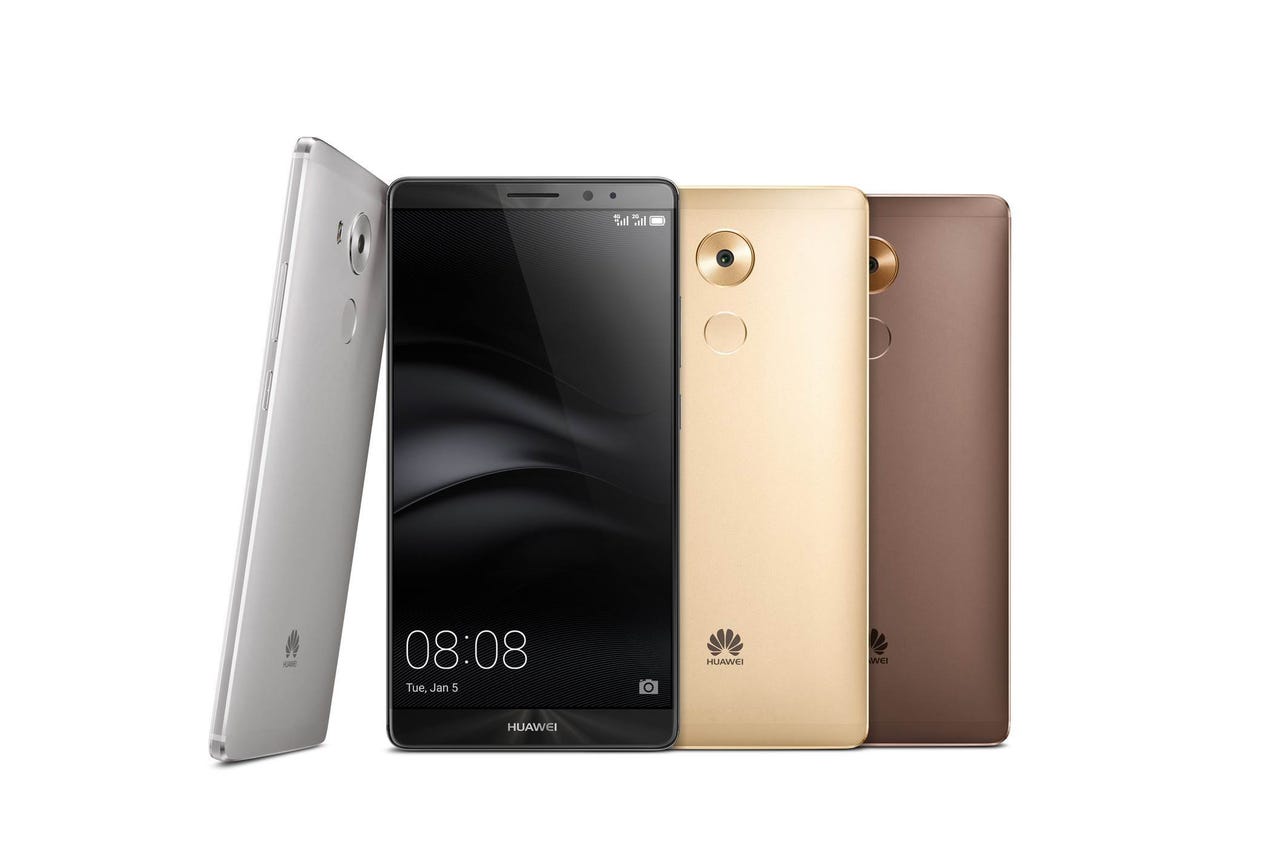Huawei launches Mate 8 smartphone

Chinese technology giant Huawei has used the Consumer Electronics Show (CES) 2016 to launch its high-end 6-inch Mate 8 smartphone, touting its increased power and battery life, as well as the improved camera, as selling points.
"With the Mate 8, we have delivered a device that meets the needs of a new style of business," said Kevin Ho, president of Huawei Consumer group's Handset Business.
"With this fast, impeccably designed smartphone, users can work more efficiently and free up valuable time to spend with friends, family, and on personal pursuits.
"The Mate 8 is the ultimate high-end smartphone. It strikes the perfect balance between high performance and long battery life, enabling people to stay connected and be more productive in every facet of their lives."

The Huawei Mate 8 smartphone
The Mate 8 runs on the Kirin 950 chipset, boosting its CPU power by 100 percent, GPU power by 125 percent, and power efficiency by 70 percent in comparison to the preceding Kirin 925 chipset.
It also features 4x A72 2.3GHz processors and 4x A53 1.8GHz processors; Huawei's EMUI 4.0; a 4000mAh high-density battery lending itself to between 1.65 and 2.36 days of usage; rapid charging within 30 minutes; six-layer thermal mechanics; Android Marshmallow 6.0; a split-screen mode for multitasking; real-time encryption of full storage; a microSD card lock; three microphones; and a Sony 16MP IMX298 rear-facing camera and 8MP front camera.
The Mate 8's camera cost Huawei $98 million in research and development, and sports a proprietary image sensor processor for better clarity, more accurate colour shading, and faster focusing. It also employs a "beauty algorithm" for selfie-taking purposes.
Huawei also boasted that its fingerprint technology improves the identification area by 10 percent for added security, and a 100 percent faster unlocking speed. Two sets of fingerprint interface standards are used when making payments: The Fast Identity Online (FIDO) and Android M standards.
The smartphone will be made available in 30 countries to begin with, including Germany, France, Australia, Spain, and Mexico at a cost of €599 ($645) for the 32GB model and €699 ($752) for the 64GB version. It comes in moonlight silver, champagne gold, space grey, and mocha brown variants.
More CES 2016
Huawei first announced the Mate 8 in November, saying prices would start at 2,999 RMB ($469).
The Huawei-built 5.7-inch Google Nexus 6P also launched in late 2015, featuring a 5.7-inch 1440p display; an eight-core 1.9GHz Qualcomm Snapdragon 810 processor with 3GB of RAM; a 3450mAh battery; a 12.3-megapixel rear camera; and an 8-megapixel front-facing camera.
In November, Huawei announced the next generation of the smartphone would be the "superphone", which will further integrate the physical with the digital world.
According to Shao Yang, president of Strategy Marketing at Huawei Consumer Business Group, the smartphone-to-superphone evolution will take place within a 12-year cycle similar to the one that saw Motorola invent the first feature phone in 1995 and Apple end that cycle by inventing the iPhone in 2007. Following this established 12-year trend, the superphone will be developed by 2020.
"Inspired by the biological evolution, the mobile phone we currently know will come to life as the superphone," Shao said.
"The intelligence of the superphone will continue to evolve and develop itself into digital intelligence, capable of empowering us with interactions with the world. Through evolution and adaptation, the superphone will be more intelligent, enhancing and even transforming our perceptions, enabling humans to go further than ever before."
The Chinese company said the superphone will take advantage of advancements in big data, cloud computing, and digital intelligence by tying in with the Internet of Things (IoT), where all physical things are digitalised.
Huawei also used CES 2016 to announce that it had exceeded its target of shipping 100 million smartphones for calendar 2015, managing to ship 108 million smartphones over the year. It also achieved revenue of more than $20 billion, an increase of almost 70 percent over 2014.
Huawei now holds the most market share in China, and also ranks in the top three for the high-end smartphone sector in Spain, Italy, Belgium, Portugal, Switzerland, and other Western European countries.
Huawei attributed its high-performing results to continued investment in innovation, having invested $29 billion into research and development over the last 10 years.